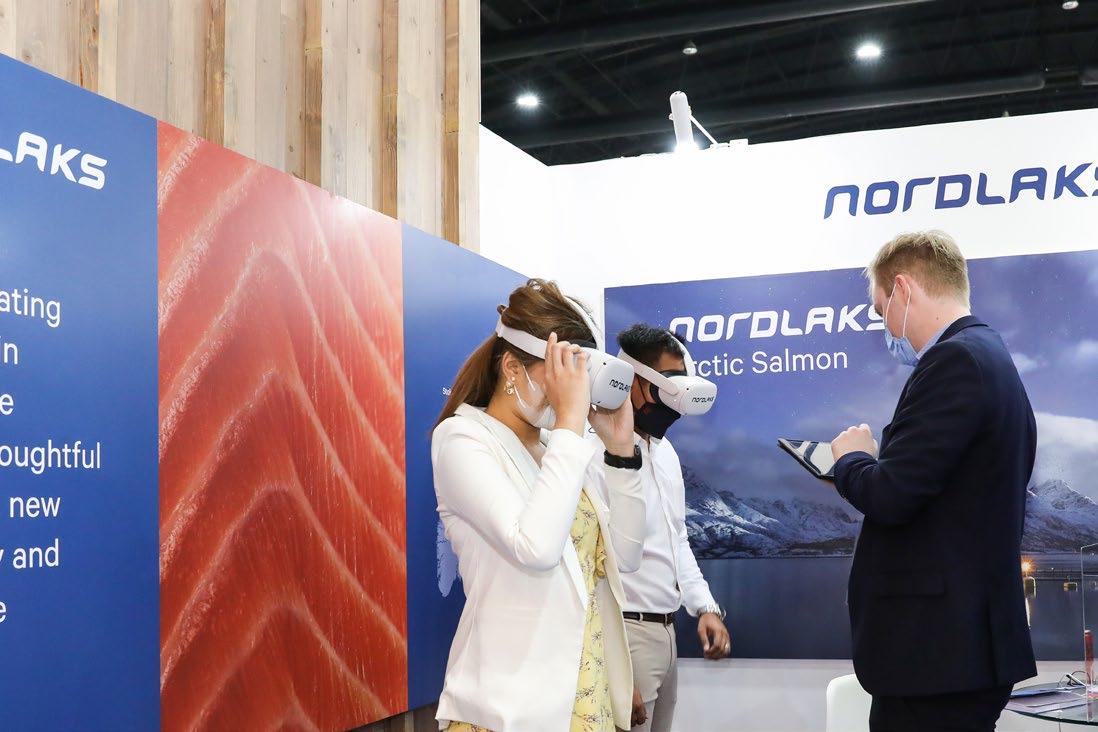
3 minute read
Cover Story
As a sustainable practice, aquaculture must strike a delicate balance between ecological responsibility, social welfare, and economic viability. Firstly, it should mitigate the overexploitation of wild fish stocks by reducing pressure on marine ecosystems through controlled fish, shellfish, and seaweed production. Aquaculture can help alleviate the strain on fragile oceanic habitats and declining fish populations by providing an alternative to traditional fishing.
Sustainable aquaculture enhances social welfare by creating economic opportunities for coastal communities. By fostering local employment, supporting livelihoods, and promoting equitable distribution of benefits, responsible aquaculture can contribute to the socioeconomic development of communities dependent on marine resources.
The economic viability of aquaculture is crucial for its long-term sustainability. The industry can ensure economic resilience while minimizing environmental impacts by optimizing production methods, reducing operational costs, and investing in research and development.
Becoming Stewards of the Ocean and Marine Life: Collaboration and Responsibility
The transition towards sustainable marine agriculture requires stakeholders to embrace their roles as stewards of the ocean and marine life. Governments, industry players, researchers, consumers, and local communities must collaborate and take collective responsibility to drive positive change.
Governments play a vital role in creating robust regulatory frameworks that promote sustainable practices and ensure compliance. By establishing stringent environmental standards, enforcing responsible farming protocols, and incentivizing innovation, policymakers can create an enabling environment for sustainable aquaculture.
Industry players have a responsibility to implement best practices that prioritize environmental sustainability. This includes responsible feed sourcing to reduce pressure on wild fish stocks, adopting eco-friendly farming systems, minimizing the use of antibiotics and chemicals, and implementing effective waste management strategies. Transparency and accountability in supply chains are also essential to build consumer trust and promote sustainable seafood choices.
Consumers also play a significant role by making informed choices and demanding sustainable seafood options. By supporting certification programs such as the Marine Stewardship Council (MSC) and the Aquaculture Stewardship
Council (ASC), consumers can drive the market demand for responsibly sourced seafood, encouraging producers to adopt sustainable practices.
The NSC shares that our ocean stocks remain balanced and the assurance that there will be enough seafood for the future generation. Less greenhouse gas emission, less farmed land.
Food production contributes to climate change. However, food production from the sea may be advantageous from a climate change perspective for three reasons. First, because their production occurs in the ocean, capture, and aquaculture production do not directly drive land conversion like land-based food systems (e.g., conversion from forests to farms and areas for raising livestock).
Second, for many marine species, the greenhouse gas emissions associated with their production are comparatively low. Greenhouse gas emissions per portion of protein, associated with producing large pelagic, small pelagic, and white fish capture fisheries and molluscs and salmon in aquaculture are lower than terrestrial animal production. Norwegian aquaculture tops the charts of the most sustainable animal protein production. The Coller FAIRR Index, which ranks the world’s most sustainable animal protein producers, awarded three Norwegian aquaculture companies. Of the four companies identified as being ‘low risk,’ three are Norwegian aquaculture producers. The world’s largest salmon farmer, Mowi, once again took the top spot. It’s followed by Greig Seafood in at number two and Lerøy Seafood coming in at number four.
All have held these positions following the rankings in 2021. In addition, Salmar ASA claims 10th place in the ranking. As the world’s only comprehensive assessment of animal proteins, the index considers various factors contributing to a protein’s overall score. This includes greenhouse gas emissions, water use, biodiversity, animal welfare, and antibiotic use, to working conditions and governance.
The Norwegian Seafood Council’s Notable Contributions
The Norwegian Seafood Council has been at the forefront of promoting sustainable practices in aquaculture. Notably, in recent years, they have made significant contributions that have advanced the cause of sustainability.
One noteworthy area of focus has been developing and promoting sustainable fish feed alternatives. Recognizing that traditional fish feed reliant on fishmeal and fish oil derived from wild-caught fish contributes to overfishing, the Council has actively supported research and implementation efforts for alternative feed ingredients. Plant-based proteins and microalgae are emerging as viable alternatives, reducing the industry’s dependence on wild fish resources and addressing a significant environmental concern.
The Council has made significant strides in establishing rigorous regulations and certifications for the Norwegian aquaculture industry. By ensuring compliance with strict environmental standards and supporting sustainable farming practices, they have elevated the overall sustainability of Norwegian aquaculture. Their initiatives have helped create a culture of responsibility, with practices and standards being emulated and adopted globally. The NSC has initiated campaigns such as “Sustainable Aquaculture,” to raise consumer awareness and promote sustainable seafood choices.









